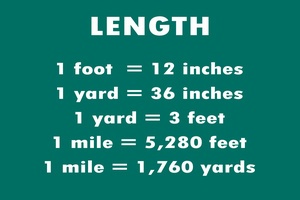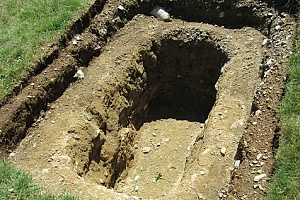How to Accurately Calculate Fill Dirt Needed for Your Landscaping Project: A Step-by-Step Guide
Accurately Calculate Fill Dirt Needed
Are you planning a landscaping project and unsure how much fill dirt you’ll need? You’re not alone. Many homeowners find it difficult to calculate fill dirt needed for their specific space. The right amount is essential—not just for beauty, but also for drainage and soil stability.
In this step-by-step guide, we’ll walk you through the process. From assessing your space to determining the right quantity, we’ll make it simple. Whether you’re leveling ground or building a raised bed, you’ll learn how to get it right. Let’s dive in and create the outdoor space you’ve been dreaming about.
Understanding Fill Dirt: What It Is and Why You Need It
Fill dirt is the layer of subsoil beneath the topsoil. It contains little to no organic matter, which makes it stable and less prone to shifting. This stability makes it perfect for filling holes, raising elevations, and building foundations.
Fill dirt is used in many projects. You might need it to level a yard, fill a depression, or build up a landscape feature. Without it, your project may suffer from poor drainage or instability. Proper use of fill dirt improves both function and appearance.
By understanding what fill dirt is and why it’s important, you’re setting yourself up for success. This foundational knowledge gives you the confidence to proceed with your project the right way.
Assessing Your Landscaping Project: Key Considerations
Before you begin measuring, take time to assess your project. What is the fill dirt for? Are you leveling, raising, or supporting something? Knowing your goal helps determine the volume and type of fill dirt you need.
Measure the area carefully. Use a tape measure to record length, width, and depth. Break irregular areas into rectangles or triangles for easier calculation. Also, consider the terrain. Uneven ground often requires more fill.
Check your soil type. A simple test can reveal drainage characteristics. Clay soil holds water; sandy soil drains quickly. Choose a fill dirt type that complements your existing soil. This will ensure better results.
Measuring the Area: Tools and Techniques
To measure accurately, you’ll need a tape measure, stakes, string, and a level. For larger areas, a measuring wheel or laser level is helpful.
Measure length and width, marking the boundaries with stakes and string. For oddly shaped areas, break them into sections. This helps maintain accuracy.
Now measure depth. This varies by project. A lawn might need 2–4 inches. A raised bed might need 12 inches. Measure depth at several points and take the average.
These accurate measurements are essential for calculating volume.
Calculating Volume: Formulas for Fill Dirt Estimation
Use this simple formula to calculate fill dirt needed: length x width x depth. For example, a space 20 feet long, 10 feet wide, and 3 feet deep equals 600 cubic feet.
For irregular shapes, break the area into parts. Use formulas for triangles (0.5 x base x height x depth) or circles (π x radius² x depth).
Convert to cubic yards, the standard for suppliers. Divide cubic feet by 27. In the above example, 600 cubic feet becomes about 22.22 cubic yards. This ensures you order the right amount when you calculate fill dirt needed for your landscaping project.
Types of Fill Dirt: Choosing the Right Material for Your Project
Not all fill dirt is the same. Common types include clean fill, clay, sandy, and topsoil. Clean fill is free from debris and best for most projects.
Topsoil is rich in organic matter but may shift over time. It’s good for a top layer, not as a base. Clay is dense and compacts well but drains poorly. Sandy fill drains well but doesn’t compact as firmly.
Match the type to your project. For a raised bed, combine clean fill and topsoil. For drainage concerns, use sandy fill. Choosing the right material is just as important as learning how to calculate fill dirt needed accurately.
Factors Affecting Fill Dirt Quantity: Drainage, Compaction, and More
Several factors impact how much fill dirt you’ll need. One is drainage. Poor drainage may require more dirt to raise the area. Compaction is another key factor. Dirt settles over time, so plan for it. Add 10–15% extra to account for compaction. Also consider vegetation, rocks, and debris. These may need to be cleared first, increasing how much dirt you’ll need. Evaluate your site thoroughly to get a better estimate.
Tips for Ordering Fill Dirt: How Much to Buy
Start with your volume calculation in cubic yards. Then add 10–15% for compaction and unexpected needs. Choose a reputable supplier. Ask for clean, screened fill dirt. Inspect samples if possible. Avoid dirt with debris or contaminants. Check delivery options. Make sure trucks can access your site. Coordinate delivery with your schedule to avoid delays. By planning well, you’ll avoid costly surprises.
Delivery and Placement: Best Practices for Fill Dirt
Spread the fill dirt evenly across the area. Use a shovel or rake for small projects. For larger areas, use a skid steer or similar equipment. Compact the fill dirt in layers. Work in 6-inch increments. Compact each layer before adding more. This ensures stability. Check the level as you go. Use a level or straightedge to spot uneven areas. Adjust as needed. A smooth finish means better results for the next phase.
Common Mistakes to Avoid When Calculating Fill Dirt
One mistake is underestimating depth. Measure in several places to get an accurate average. Another is forgetting compaction. Always add 10–15% to your total. This keeps you from running short. Finally, don’t choose the wrong type of dirt. Know your soil and choose fill that works well with it. Talk to an expert if needed. Avoiding these errors will save you money and prevent project delays.
Conclusion: Ensuring a Successful Landscaping Project with Accurate Fill Dirt Calculations
Every successful project starts with good planning. Accurately calculating fill dirt is a key part of that process. Measure carefully, choose the right type of fill, and account for compaction. Order from a trusted source, prepare your site, and follow best practices for placement. Avoid common mistakes and you’ll set your project up for long-term success. By following this guide, you can confidently plan and complete your landscaping project. With the right amount of fill dirt, your outdoor space will be both beautiful and functional. Happy landscaping!
High-Volume Dirt Delivery, Hauling & Full-Service Construction—We Get It Done Right
Get screened fill dirt, grading, and dump truck hauling in Virginia and Maryland. In fact, this team specializes in high-volume dirt delivery, construction site preparation, and bulk material transport. Whether you need backfill after pool removal, driveway grading, or foundation pad creation, they’ve got you covered. Plus, they deliver clean, compactable fill with fast, reliable service and fair pricing. So, order online now for dirt delivery in Fairfax, Arlington, Alexandria, Rockville, and nearby areas. To get started, simply call 703-940-9949 or visit DirtConnections.com.
Summary

Dirt Connections was started with one goal in mind: providing quality residential and commercial construction services to clients on time and on budget. Reach out for more information on how we can support your next project.
For your convenience our estimates are free and by appointment. Call 703-940-9949 for a free estimate today!









































